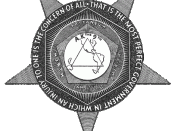The Gilded Age existed during the late 1800s where the corruption of the government was at its peak and the lowest point of American politics. "The Gilded Age" was a name given by Mark Twain in his belief that politics corruption and greed lurked below the polite and prosperous luster of American society. He believed that politics was like the base material that hides beneath the glittering gold surface of a gilded object. Because of such beliefs many reform movements or labor movements established. Some labor movements emerged from political corruptions was the "American Federation of Labor" (AFL), "Knights of Labor", "Congress of Industrial Organizations" (CIO), the "Farmers' Alliance", and the "Populist Party".
In this time period, America was in an industrial growth and had to make sure that the laissez-faire type government did not hinder its success. A laissez-faire type government meant that the government cannot intervene in commerce beyond the minimum necessary for a free-enterprise system to operate according to its own economic laws.
In contribution to having the government not interfering in the economics of the country was the band of presidents who did insignificant acts in office to prevent corruption from happening.
With each labor movement the government tried to suppress any chance of their ideas rising to the top. The Interstate Commerce Act was passed in 1887, where it prohibited railroads from giving secret rebates to larger shippers or charging more for short hauls than for long hauls over the same line. They made sure that the prices and railroad rates had to be reasonable and just. Although this was passed, the government did not do much to enforce it. The Interstate Commerce Commission (ICC) was established to monitor railroad activities but when there were charges on railroads with violating the law, the...


